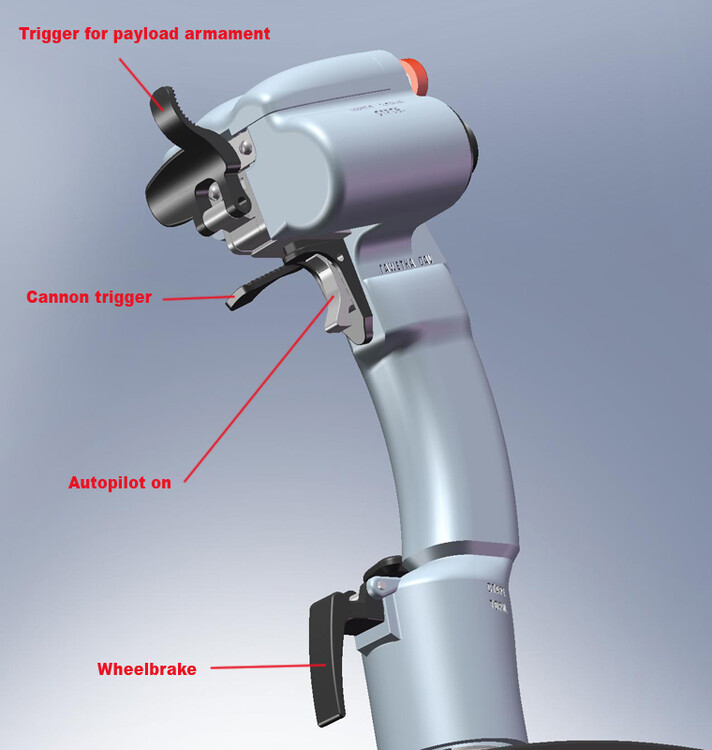-
Posts
6275 -
Joined
-
Last visited
-
Days Won
20
Content Type
Profiles
Forums
Events
Everything posted by Ironhand
-
Do you have any of the extraneous nVidia software installed or anything similar that can be set to take screenshots?
-

Barthek's CAUCASUS REDONE 2022
Ironhand replied to Barthek's topic in Texture/Map Mods for DCS World
Which is exactly what I told Mike_CK. You can’t just dump the files into a Mod folder. You need to use JSGME or something similar to place them in main DCS directory. Either that or place them there manually. -

Barthek's CAUCASUS REDONE 2022
Ironhand replied to Barthek's topic in Texture/Map Mods for DCS World
??? -

Barthek's CAUCASUS REDONE 2022
Ironhand replied to Barthek's topic in Texture/Map Mods for DCS World
It has to replace core files. So a MOD folder doesn't work. -

Barthek's CAUCASUS REDONE 2022
Ironhand replied to Barthek's topic in Texture/Map Mods for DCS World
Just installed this and WOW!!! Pure delight. -
Just want to note that ALT-ENTER is a Windows thing not specific to DCS: https://support.microsoft.com/en-us/topic/alt-enter-switches-between-window-and-full-screen-d1b23daa-644d-3fbf-2f5e-c2c779584db5#:~:text=When you run an application,is displayed in full screen. So, whether by accident or design, DCS no longer allows the Windows convention.
-
Esac_mirmidon is the person to ask. He’s translated that part of the manual. I haven’t done that yet. But I do know you won’t find previous and next buttons for the waypoints. There will most likely be several buttons—not certain how many—with programmed waypoints, should you need to manually select one.
-

Mission's or Campines for the DCS SU-27...
Ironhand replied to shaneduce's topic in Su-27 for DCS World
Last time I looked there were 50+ missions listed for the Su-27. I imagine you’ll find at least a few to your liking. -
IIRC, the the former acts like a parking brake and locks the breaks in the “on” position. The latter simply applies the brakes when used.
-
-

Some more modern "Flaming Cliffs" modules
Ironhand replied to Flogger23m's topic in DCS Core Wish List
Neither is an F-15C vs an A-10A or Su-25. So I’m not quite sure what your point was. -

Flaming Clifs 3 RUS aircraft useless ET/T Optical system nerf
Ironhand replied to mrfoxik's topic in DCS: Flaming Cliffs
How about 95 km in the sim? If the brief lock hadn’t broken, I had launch authorization at just inside 95 km. I couldn’t relock and launch until just above 80, though you can see RMax-1 remains at 95: -
Yes and no. It depends on what you want to do. TRK files start at the beginning and only play forward. So you can, for instance, shorten a TRK to only show the beginning by playing it back, stopping it where you want, and saving the shortened TRK. If you wanted to only show something in the middle or at the end, however, you’re SOL. ….
-

Some more modern "Flaming Cliffs" modules
Ironhand replied to Flogger23m's topic in DCS Core Wish List
Most of it, I imagine. The environment is the same—atmosphere, clouds, terrain, sea, AI. The aircraft will be different at first but, once they start converting DCS aircraft to MAC, much of that will be shared as well. DCS and MAC are modules that plug into their Simulation Operating System, as will future products. -

Visual indication for Salvo Mode with Su-33 / Flankers
Ironhand replied to Ryu8200's topic in Flaming Cliffs Bugs & Problems
There was only one salvo mode—all of the selected weapon. So there was no “which” mode to indicate. But they did remove the salvo indication at some point and it would be nice to have it back. Some of us can’t remember whether or not we turned it off after using it. It’s very disconcerting to salvo your bombs only to have all of your R-27s leave the rails at once, when you launch against a closing hostile aircraft as you come off target. -

Some more modern "Flaming Cliffs" modules
Ironhand replied to Flogger23m's topic in DCS Core Wish List
It's a solution but might not be a solution for DCS World. What's described in the interview doesn't sound much like DCS World: It really feels like they plan is to keep the two separate. But that's just my take on it. I'm guessing that MAC will even have its own separate Forum because it is being viewed as its own animal. -

yes Does buying just a map allow you to join non trial only servers?
Ironhand replied to ClydeBigBird's topic in DCS 2.9
He can join a server but will only be able to fly aircraft he owns. So with DCS World only, he’ll have the Su-25T and TF-51D, the two free aircraft, available to fly. -
From Wags with more detailed descriptions: …
-

Some more modern "Flaming Cliffs" modules
Ironhand replied to Flogger23m's topic in DCS Core Wish List
Only marketing? How about an expanded player base? For people not interested in a study sim, MAC will provide the long absent opportunity to enjoy a serious combat aviation sim with numerous aircraft to fly. It should also improve the overall online player base as well, though possibly not the DCS base itself. My impression is that MAC will have its own dedicated servers. -

Some more modern "Flaming Cliffs" modules
Ironhand replied to Flogger23m's topic in DCS Core Wish List
From Matt’s interview in P C Pilot, Issue #119: MAC is its own animal. The assumption is that, unless you are an FC3 fan in DCS, you will not be investing in it. It’s being released with more maps than FC was as it is. With the SOS, any map will work with either product and future products as well. That was the plan at the time of the interview, anyway. -
I think they just took some shortcuts with the mesh. Unless you were flying low and slow, you’d never notice it.




